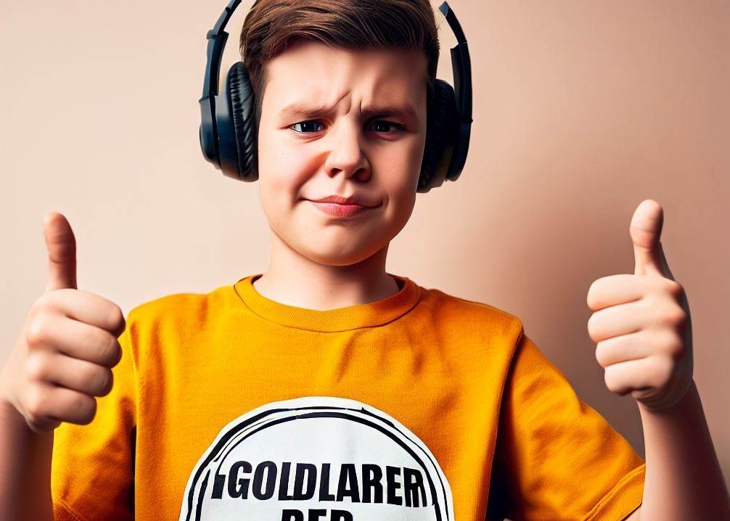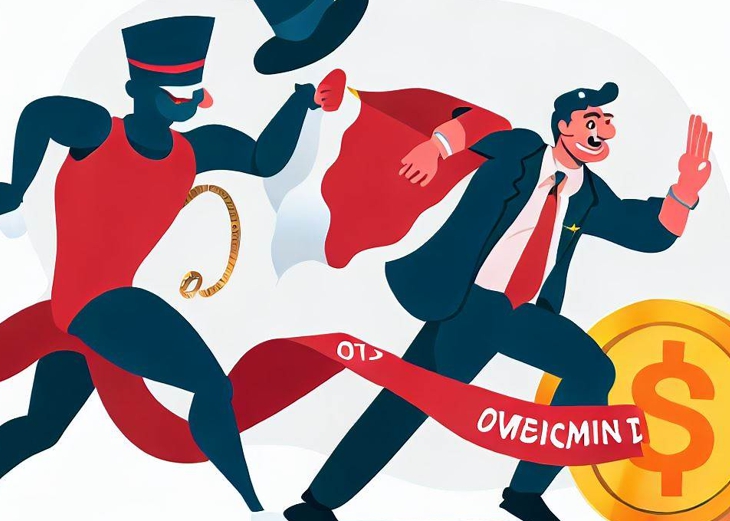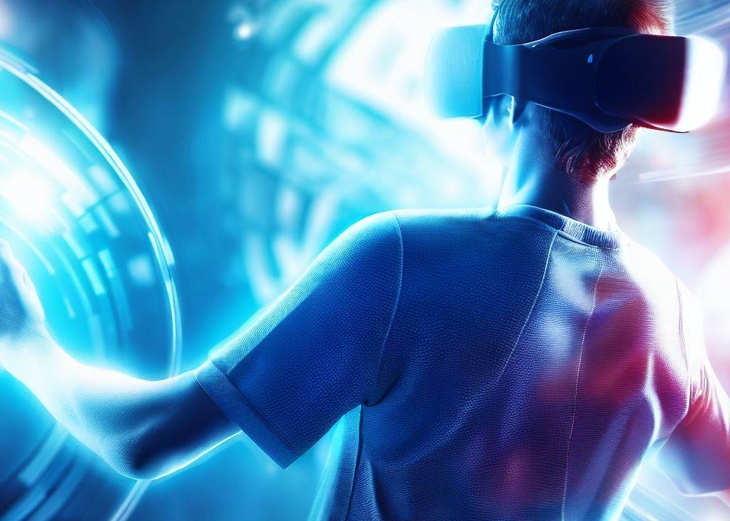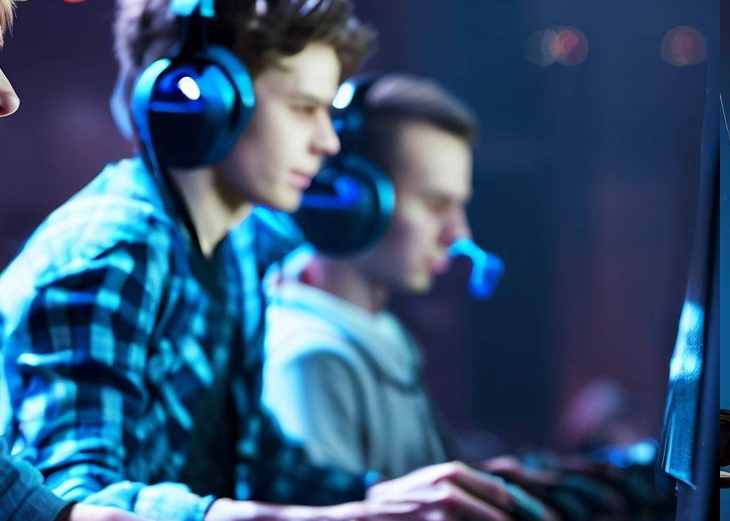I gather twenty-two of my friends, and tell them that I have a sphere made of leather. The sphere, I tell my companions, is pressurized – filled with pure and ordinary air, blown inside it without the possibility of escape. I share with them my grand idea; we should divide ourselves in groups of equal numbers, and use our feet to push that sphere around. My compatriots agree, happy to joke and pass the time.
As we prepare, one of these friends decides to make things more interesting. He comes to me and says that, since the area in which we will do this is very large, we should delimit one area from bouncing the ball to another, and suggests a symmetrical shape – a rectangle. We stand there, twenty-two men, kicking a ball to one other, and that itself is somehow fun. Other ideas arise as we begin this adult play...at least at the beginning.
In quick fashion, structure begins to form. With separate teams, one team must get the sphere first - this idea is met with a cry that we must always start the game without interference or bias. For that, we must use a coin with two faces; each phalanx picks its choice, and the one that wins chooses between side or ball. And the game becomes even more interesting when the next idea comes to light: we add smaller rectangles within the larger one. The challenge of the game shifts; now our play focuses on everyone's ability to put that sphere (the ball) from within the larger rectangle (the field) into the smaller rectangles (the goals). Another suggests that we should count the number of times we could do this, and count that score for each team. And so, as ideas accumulate with ever-increasing complexity, FOOTBALL is born.
Sport? Yes, if we consider each its creation, operational purpose, and technique. But why do we frame this justification solely within the realm of the physical? If the physical effort for competition is the definition of SPORTS, then two people washing dishes, in their physical effort, could start the Federation of the Washing Dishes Sports Association. But we know that this is not the case.
The mention of "arcade", or "game", "video game" and other like terms do not denigrate in any way the origin of Electronic Sport. Much as with those who would lambaste the origins of football, this simply reflects a lack of knowledge, or defense of a misplaced and somewhat retrograde positioning of necessity that makes us evolve. Just as the play with the leather ball has developed alongside its position and purpose, we must, with total consistency and common sense, adapt our vision for what Electronic Sport is, and its present needs, which have transcended evolution to impose themselves as a true REVOLUTION.
Speaking of which, the play with the leather sphere today yields millions, billions of dollars in investments, negotiations, and diverse contributions. This doesn’t mention the great influence on the values of human capital involved in this "joke" – and all that for what? What is the purpose of investing in someone, or a group of people, who simply have good skills in controlling that "leather sphere," – for what reason? The reason was simple: we decided that this would satisfy us; we decided to take this more seriously; and for years and years, we made this ecosystem grow and encompass more and more individuals both economically and in regulatory capacity...FOOTBALL...Electronic Sport.
Football, that play between friends, ultimately generated benefits in other areas; the impacts can be seen in the educational, social, and sporting sphere around the globe – not counting commercial purposes or the effects on households. The ultimate effects of such a game at its inception are unimaginable, unfathomable.
And we are talking here only of the joke with the leather ball and our feet. What, then, of several other individuals, gathered together and wearing fun little hats, making various signs with fingers, still wearing leather, and with a stick hitting another smaller sphere? We also have the class of those who love to play with the ball in their hands, and put it with jumps and juggling inside a kind of net fixed a few meters from the ground – not to mention the group of pranksters who love to use only parts of arms (and sometimes even feet) to happily pass that sphere over a net extended in a rectangle dividing that geometric shape in half, one that drops the ball on the ground loses and the other group of friends shouts "we won" or "point in our favor". Let's talk about people who love being in the water saying that they get to the other side faster than their friend. And what about extending to the "shuttlecock" class? Seeing in this way, we equate the origin of everything; we equate the needs and evolution, until we reach the revolutions of each one of these jokes and games that, together, were organized in a regulated and official form.
Swimming, basketball, volleyball, soccer, electronic sport, all have in their origin, the differences of needs, operation, and their subsequent evolutions. But in common, all move and are moved by the economy and culture of their inception, which today dictates time, format, purpose and position in the world. Even from among this group, electronic sport moves many times faster than some of these other magnificent sports, which fill us with emotion and even hope that everything will improve in our lives.
But it lacks regulation, order, rules, and formalization. Today we have only the fireworks – the box office and the illusions of people with excellent abilities in some franchises, to be raised to social levels in the media as rich and famous. But – like everything without foundation, structure, or regulation – it falls, passes, and goes out of fashion.
To prevent this trend, we have to create the same mechanisms that the older "traditional" sports have for themselves. This is the role of the Brazilian Confederation of Electronic Sports (CBDEL), which now and only now will be turning its attention to the official national and regulated championships. Previously, CBDEL had focused solely on building the regulatory bases, rules and business models, operations and jobs, and "signaling the expressway” which the Brazilian esports scene was building until then. We have created, among many other initiatives: athletes commissions, to offer guided arbitration as well as detailed codes of conduct and ethics; a superior court of electronic sport, providing laws for Electronic Sport, helping develop a multitude of Federal and State Law Projects, where we have our affiliated and sponsored Federations; our online electronic sports management system, our private social network allowing esports event organizers to quickly and efficiently connect with one another; and establishment of key partnerships with National APAE (a national association taking care of the mentally and physically disabled people), municipalities, states and their agencies and departments. We are the governing body recognized in Brazil for electronic sports, and our work for years with entities such as IeSF (International Federation of Electronic Sports with 49 countries and their national organizations maximum and regulatory entities, which officially recognizes us for two years and is already in conversation with the IOC for at least one year), PAMESCO - Pan American Esports Confederation (with 12 countries as members and their national maximum governing bodies), WESCO - World Esports Consortium (with more than 29 countries and their maximum entities of Esports and more than 129 diverse companies of the world), and internally with CBDEL (with its 17 state and affiliated federations and its National League and affiliated leagues and 10 other federations in formation) has directly linked to the help and full support of other Esports national governance entities around the world.
We provide statutes; we help draft esports law projects, codes of conduct, and ethics; help establish their Committees, Courts of Esports and many other details. CBDEL directly works with countries such as the United States, Peru, Argentina, Mexico to name but a few of our countries affiliated through PAMESCO – and to other countries such as Macau, China, Italy, Namibia and their governments and Ministries of Sport and Culture. All this with nothing to charge, with nothing to ask in return. Furthermore, in Brazil, the CBDEL is in the final certification process by the Ministry of Sports that in its leading decision considers the Electronic Sport as a regular sport. As mentioned by the Minister of Sports, Leonardo Picciani, and the former Secretary for High End Sports Performance, Luiz Lima, the last one lectured by my side – esports are sports. Where were these words spoken? At the opening address of the CBDEL lounge at Casa Brasil, Rio 2016 Olympics – the first time that there was a participation of an esports governing entity within an Olympic event.
While many still worry about reaching the limits of box offices heights, lights and cameras producing proper numbers, we worry about the advantages and insurance that teams and athletes have for a proper, safe, responsible environment. Throughout these years we have developed many programs with IeSF, reflecting our concern not only with the Brazilian aspect, but also the international. While we are far ahead of dozens of countries regarding to the formalization of electronic sport, so what about our position within our own country? In our globalized landscape, proper structure in the entire world is the only viable process toward stability and growth.
Many lectures throughout dozens of regions – ranging from China, to Korea, to nations throughout Europe – were made, exemplifying how and what we do with esports in Brazil. These lectures were given quite privately, but with no charge to any government in any sphere. As such, Cooperation Agreements and Contracts, through time, were obtained – one such example being our partnership with China's Ministry of Culture and Sports. All privately and with our own hands, which in our short four years of operation account an investment of more than 5.4 million reais (about more than 2.3 US million dollars). All this without having any financial return, and with no pretense of having the current sympathy of the large players within these communities – knowing that this work will be harvested by future generations only, and that those who say the contrary today, tomorrow will be in benefit of what we sow.
Teams must regulate and formalize themselves as real teams within which the laws guide us, and not just CNPJs of companies constituted as limited civil societies, EIRELE, or even MEI (yes there are teams that are only MEIs). There are also real football teams that connect to these other teams, in an environment of private competitions, more often offered by the developers themselves. This can create a vicious circle for business, and closed in that very tournament that is now completely out of the Olympic context, and works directly in contrast of what we have for official sports. But seen within this context and limitation, here in Brazil we have freedom in the practice of sport and this is guaranteed to all of us constitutionally – prohibition in any instance, even and mainly for commercial purposes, as we have seen happen past year in a major esport events, and it is considered strictly unconstitutional, likely including legal punishments and ramifications.
This is the part that gradually will be put aside or will adapt itself to the reality and culture of esports right now, by right and duty, formal in its legality and standards of what we consider professional sport and educational sport, separate from the entertainment sport, in which they eventually will fit in if there is no regularization and officialization of its operations and constitutions with the governing bodies of electronic sport in their region.
Returning to our contrast of football within esports, some soccer teams already have been engaged in forming their own esports teams – and these already understood that in the general framework it has to be added to the regulated and official scope of the category, retiring some specific private tournaments like the PSG. Several such national teams are in talks with us at CBDEL.
Now returning full circle: how does widespread recognition that esports are sports occur? Let's take, for example, children who have spent their childhoods, and then their youths and maturity, practicing basketball, and all this time, understood that by spending more time doing that either in group or individually, they were gradually becoming more skillful in what they practiced, improving their talents both physically and mentally. These same basketball players (in our example) are now young people who spent much of their time in front of the dreaded video game console or computer and understood that their skills can now be used for something useful to their career and life goals. They now also understand that these practices must be combined with physical training, endurance and health, in a healthy way from activity to diet, and even their own workouts should be carefully tailored, as in any sport. They must then be trained so that they know how to act in a team and to achieve a common purpose, whether victory or participation for aggrandizement in ladders and other rankings.
Several examples of the same physical and mental care compared to regular sports are already gaining awareness: posture while sitting in the chairs of electronic sport practice should be correct and taught, as directed by physiotherapists and orthopedists, to avoid injuries by repetition in the wrists, arms and shoulders, back and neck among other evils. The nutrition prescribed by nutritionist and even in partnership with endocrinologist, to increase the physical and mental performance of esports athletes.
These factors, and all those involving mental well-being, lead us to the psychological management and health of these athletes, who often are totally unprepared to face crowds of supporters or the levels of stress involved in international competitions. Their own desires to win push them to compete, despite the facts that the safety and future for esports athletes are so often not considered. Yet they are in the same position as athletes who practice regular sports. Both make use of the physical, the mental, and the psychological. If the diagnosis of both is identical, then what about the prognosis? After this we can see that both medical and psychological recommendations are the same for any athlete.
Using the prerogatives of my friends Daniel Kane, Brandon D. Spradley of the United States Sports Academy:
"The first video game competition can be traced back to October 19, 1972, at the Stanford University Artificial Intelligence Laboratory, where about two dozen students competed playing Spacewar (Li, 2016). One of the first competitive tournaments recognized in video games was when Atari held a multi-city competition that offered 10,000 participants a chance to become a world champion of Space Invaders ("Players Guide", 1982). Since then, the ways in which video games have been played has changed. "
The definition of sport has been attempted many times, and a universal definition has not been determined (Perks, 1999). Instead of a definite academic definition, people refer to the definition of the Oxford English Dictionary (nd), "An activity involving physical effort and skill in which one individual or team competes against another or others for entertainment" (paragraph 1).
The first term to analyze is physical effort. Aadahl, Kjaer and Jørgensen (2007) state that the absolute intensity can be used to determine exercise intensity, analyzing multiple basal metabolic rate of an individual (MET). Since the MET could be used to determine the effort, a connection could be made through the way the MET is affected when playing video games. In addition, oxygen levels (VO2) can be used; a moderate physical activity would have a VO2 reserve of 40% to 60% and / or 4-6 MET (Stroud, Amonette & Dupler, 2010). In a study by Bronner, Pinsker and Noah, (2013), TEM men and women created between 4-9 while participating in video games involving dance. Stroud et al. (2010) were able to get their VO2 and MET participants on a low to moderate level of activity, standing up and shaking Nintendo Wii controllers while playing Mario and Sonic at the Olympic Games. This shows the physical effort shown during video game playback.
Several connections can be observed between physical effort and video games. Modesti et al. (1994) conducted a study that showed that baseline blood pressure is increased during video game playback. In addition, physical exertion can also be considered perceived exertion. Two ways of measuring perceived effort are the use of 15 Borg Ratings of Perceived Exertion (RPE) or the 10-point Borg category ratio (CR10) (Borg, 1998). Using RPE and CR10, a participant analyzes the scale and determines the intensity of the activity.The heart rate can also be used to evaluate the perceived exertion because the RPE is structured range from 6 to 20 to represent the heart rate. During video game and training competitions, many eSports athletes displayed signs that could be considered physical efforts to keep up with the routine of being a professional video player (Li, 2016; Rodriguez, et al., 2016).
The second part of the definition to analyze is skill. To become a professional player, a player must learn different skills and techniques to improve. Researchers used video games as a way to understand how a person develops skills (Boot, Sumner, Towne, Rodriguez and Ericsson, 2016). Green and Bavelier (2015) conducted a study that showed that people learn the skills of playing action video games. Bavelier, Green, Pouget and Schrater, (2012) conclude that no skill, but many skills, are obtained by playing action video games. In competitive games, skilled players dominate people who play for fun (Li, 2016). In eSports, there is a clear division in the record of winnings and losses between players who are considered professionals and those who are not.
The final part of the definition deals with a person or team competing against another person or team for entertainment. Playing video games as a hobby has evolved into competitions and tournaments with cash prizes. Depending on the game being played, a person can get in a solo competition in cases of fighting games such as Street Fighter, or join a team, playing games like Counter-Strike or League of Legends. ESports are broadcast on ESPN in the United States and various networks around the world. Special eSports areas were built to host the events.
Countries have begun to recognize professional gamers as athletes. In the United States, professional players can obtain P-1 visas, which are given to athletes (US Citizenship and Immigration Services, na). In 2013, professional player Danny "Shiphtur" Le was the first to receive a P-1 visa for eSports (Dave, 2013). In Korea, the Korea e-Sports Association (KeSPA) is recognized by the Korean Sports and Olympic Committee (KeSPA, na). KeSPA regulates the amateur and professional status of the athlete (Li, 2016). The recognition of professional players grew in South Korea that the South Korean Air Force had an eSports team when professional players had to do mandatory military service (Li, 2016). Using the examples provided, eSports should be recognized as a sport. "
REFERENCES
1. Aadahl, M., Kjaer, M., & Jørgensen, T. (2007). Perceived exertion of physical activity: Negative association with self-rated fitness.Scandinavian Journal of Public Health, 35 (4), 403-409.
2. Bavelier, D., Green, C., Pouget, A., & Schrater, P. (2012). Brain plasticity through the life span: Learning to learn and action video games.Annual Review of Neuroscience, 35, 391-416.
3. Boot, WR, Sumner, A., Towne, TJ, Rodriguez, P., & Ericsson, K. (2016). Applying aspects of the expert performance approach to better understand the structure of skill and mechanisms of skill acquisition in video games. Topics in Cognitive Science. Online version of record published before inclusion in an issue, 1-24. doi: 10.1111 / tops.12230
4. Borg, G. (1998). Borg's perceived exertion and pain scales. Champaign, IL: Human Kinetics.
5. Bronner, S., Pinsker, R., & Noah, J. (2013). Energy cost and game flow of 5 exer-games in trained players. American Journal of Health Behavior, 37 (3), 369-380. doi: 10.5993 / AJHB.37.3.10
6. Buck, K. (2015). Counter-Strike: The rise of female eSports players in Europe. Retrieved from http://iq.intel.co.uk/counter-strike-the-rise-of-female-esports-players-in-europe/?_ga=1.214843985.736652475.1486230233
7. Collegiate Starleague. (nd). Home page. Retrieved from https://www.cstarleague.com/.
8. Dave, P. (2013, August 7). Online game League of Legends star gets US aims at pro athlete. Los Angeles Times. Retrieved from http://www.latimes.com/
9. Duggan, M. (2015). Gaming and gamers (Research Report). Retrieved from Pew Research Center website: http://www.pewinternet.org/2015/12/15/gaming-and-gamers/
10. Entertainment Software Association. (2016). 2016 essential facts about the computer and video game industry (Research Report). Retrieved from Entertainment Software Association website: http://www.theesa.com/wp-content/uploads/2016/04/Essential-Facts-2016.pdf
11. E-sports Earnings. (nd). Top female players. Retrieved from http://www.esportsearnings.com/players/female-players
12. Green, C., & Bavelier, D. (2015). Action video game training for cognitive enhancement. Current Opinion in Behavioral Sciences, 4, 103-108.http://dx.doi.org/10.1016/j.cobeha.2015.04.012
13. Harwell, D. (2014). More women play video games than boys, and other surprising facts lost in the mess of gamergate. The Washington Post.Retrieved from https://www.washingtonpost.com
14. Kendall, L. (2011). '' White and nerdy '': Computers, race, and the nerd stereotype. The Journal of Popular Culture, 44 (3), 505-524.
15. KeSPA. (nd). Greetings. Retrieved from http://e-sports.or.kr/page_kespa2014.php?_module=kespa&_page=greeting
16. Li, R. (2016). Good luck have fun: The rise of eSports. New York, NY: Skyhorse Publishing.
17. Masteralexis, LP, Barr, CA, & Hums, MA (2015). Principles and practice of sport management 5th ed. Burlington, MA: Jones & Bartlett Learning.
18. Maxcy, JG, & Larson, DJ (2015). Reversal of fortune or glaring misallocation: Is a new football stadium worth the cost to a university?International Journal of Sport Finance, 10 (1), 62-86.
19. Modesti, P., Pela, I., Cecioni, I., Gensini, G., Neri Serneri, G., & Bartolozzi, G. (1994). Changes in blood pressure reactivity and 24-Hour blood pressure profile occurring at puberty. Angiology the Journal of Vascular Diseases, 45 (6), 443-450.
20. Oxford English Dictionaries. (nd). Sport. Retrieved from https://en.oxforddictionaries.com/definition/sport
21. Perks, TA (1999). An analysis of the conceptual uncertainty surrounding the term 'sport' within the field of sport sociology (Master's thesis).Retrieved from ProQuest Dissertations Publishing (MQ42188).
22. Players guide to electronic science fiction games. (1982, March). Electronic Games, 1 (2), 35-45.
23. Robert Morris University. (nd). Athletics. Retrieved from http://www.rmueagles.com/
24. Rodriguez, H., Haag, M., Abner, S., Johnson, W., Glassel, A., Musselman, R., & Wyatt, R. (2016). The making of eSports champions. New York, NY: HarperCollins Publishers.
25. Rosner, SA, & Shropshire, KL (2011). The business of sports. (2nd ed.). Sudbury, MA: Jones & Bartlett Learning.
26. Ruby, J. (2004, December). The new jocks on campus Chicago's Robert Morris University is the first college in the country to make video games at varsity sport. Chicago Magazine. Retrieved from http://www.chicagomag.com/
27. Stafford, SL (2004). Progress toward Title IX compliance: The effect of formal and informal enforcement mechanisms. Social Science Quarterly, 85 (5). 1469-1486. doi: 10.1111 / j.0038-4941. 2004.00286.x
28. Stroud, LC, Amonette, WE, & Dupler, TL (2010). Metabolic responses of upper-body accelerometer-controlled video games in adults.Applied Physiology, Nutrition & Metabolism, 35 (5), 643-649. doi: 10.1139 / H10-058
29. TEDx Talks. (2016, January 27). Kurt Melcher: Gamers: The rising stars of athletics collegiate. Retrieved from https://www.youtube.com/watch?v=kcX11m1g3hs
30. The National Collegiate Athletic Association. (nd). Emerging Sports for Women. Retrieved fromhttp://www.ncaa.org/about/resources/inclusion/emerging-sports-women
31. The National Collegiate Athletic Association. (nd). NCAA emerging sports for women process guide. Retrieved from http://www.ncaa.org/about/resources/inclusion/ncaa-emerging-sports-women-process-guide
32. The National Collegiate Athletic Association. (nd). What is the NCAA? Retrieved from http://www.ncaa.org/about/resources/media-center/ncaa-101/what-ncaa
33. Title IX of the Education Amendments of 1972, 20 USC §§ 1681 et seq. (1972).
34. Twitch. (nd). About Twitch. Retrieved from https://www.twitch.tv/p/about
35. US Citizenship and Immigration Services. (nd). P-1A internationally recognized athlete. Retrieved from https://www.uscis.gov/working-united-states/temporary-workers/p-1a-internationally-recognized-athlete
36. US Department of Education Office of Civil Rights. (2008, September 17). Dear colleague letter: Athletic activities counted for Title IX compliance. Retrieved from https://www2.ed.gov/about/offices/list/ocr/letters/colleague-20080917.html
37. Watanabe, NM (2015). Sources of direct demand: An examination of demand for the Ultimate Fighting Championship. International Journal of Sport Finance, 10 (1), 26-41.
38. Wingfield, N. (2014, December 8). E-Sports at college, with stars and scholarships. The New York Times. Retrieved from https://www.nytimes.com
Wolverton, B. (2009). The cutbacks hit college sports, baseball falls behind in the count. Chronicle of Higher Education, A1-A16.
39. Yuracko, KA (2002). Title IX and the problem of gender equality in athletics. Gender Issues, 20 (2), 65-80.




